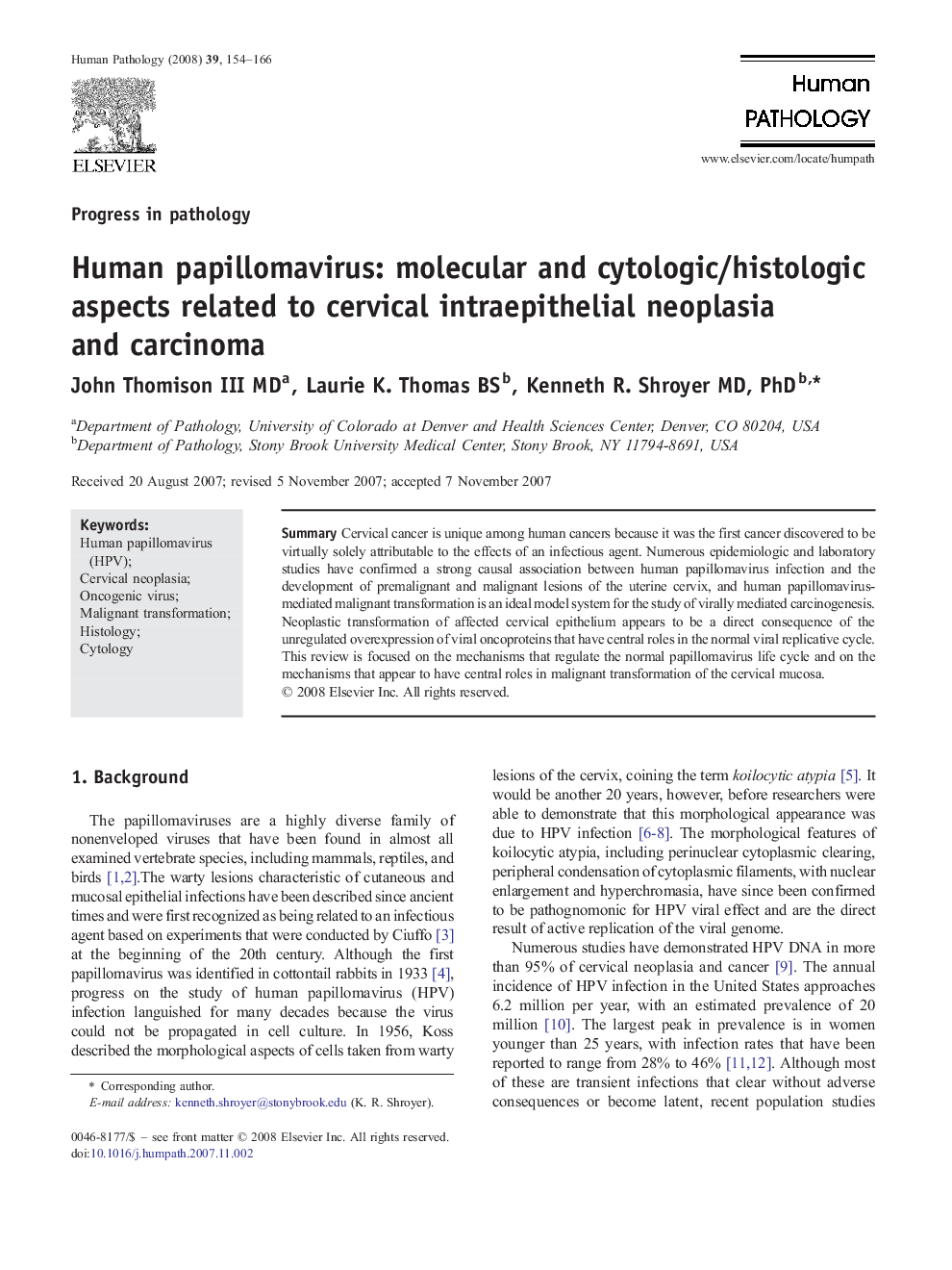| Article ID | Journal | Published Year | Pages | File Type |
|---|---|---|---|---|
| 4135183 | Human Pathology | 2008 | 13 Pages |
SummaryCervical cancer is unique among human cancers because it was the first cancer discovered to be virtually solely attributable to the effects of an infectious agent. Numerous epidemiologic and laboratory studies have confirmed a strong causal association between human papillomavirus infection and the development of premalignant and malignant lesions of the uterine cervix, and human papillomavirus-mediated malignant transformation is an ideal model system for the study of virally mediated carcinogenesis. Neoplastic transformation of affected cervical epithelium appears to be a direct consequence of the unregulated overexpression of viral oncoproteins that have central roles in the normal viral replicative cycle. This review is focused on the mechanisms that regulate the normal papillomavirus life cycle and on the mechanisms that appear to have central roles in malignant transformation of the cervical mucosa.
